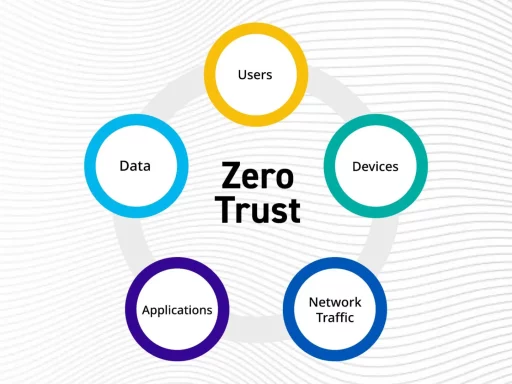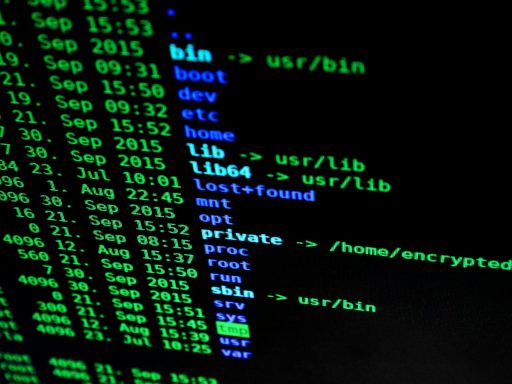In today’s digital landscape, security is a paramount concern for any organization involved in software development. Building a secure development lifecycle (SDLC) is essential for protecting applications from vulnerabilities and ensuring the integrity of sensitive data. This comprehensive guide delves into key practices for establishing a secure development lifecycle, offering insights and actionable strategies to safeguard your software from conception to deployment and beyond.
Table of Contents
- Introduction to Secure Development Lifecycle (SDLC)
- Understanding the Importance of SDLC
- Key Phases of a Secure Development Lifecycle
- Best Practices for a Secure SDLC
- 1. Security Training and Awareness
- 2. Threat Modeling
- 3. Secure Coding Standards
- 4. Code Reviews and Static Analysis
- 5. Dynamic Analysis and Penetration Testing
- 6. Security Testing
- 7. Patch Management
- 8. Secure Deployment Practices
- 9. Continuous Monitoring and Incident Response
- 10. Documentation and Compliance
Introduction to Secure Development Lifecycle (SDLC)
What is SDLC?
The Secure Development Lifecycle (SDLC) is a structured approach to software development that incorporates security considerations at every stage. It aims to minimize vulnerabilities and ensure robust protection against threats by embedding security practices throughout the development process.
Goals of SDLC
- Minimize Vulnerabilities: Identify and mitigate security flaws early in the development process.
- Protect Sensitive Data: Ensure the confidentiality, integrity, and availability of data.
- Regulatory Compliance: Adhere to industry standards and regulatory requirements.
- Enhance Trust: Build secure software that users and stakeholders can trust.
Understanding the Importance of SDLC
Incorporating security into the development lifecycle is crucial for several reasons:
- Early Detection: Identifying and addressing security issues early in the development process is more cost-effective and less disruptive than fixing them post-deployment.
- Risk Mitigation: Reducing the risk of security breaches helps protect your organization from financial loss, reputational damage, and legal repercussions.
- Compliance: Many industries require adherence to specific security standards and regulations, such as GDPR, HIPAA, and PCI DSS.
- Customer Trust: Delivering secure software enhances customer confidence and loyalty.
Key Phases of a Secure Development Lifecycle
A secure development lifecycle typically consists of the following phases:
- Planning and Requirements: Define security requirements and objectives.
- Design: Incorporate security architecture and design principles.
- Implementation: Develop code following secure coding standards.
- Testing: Perform security testing to identify and fix vulnerabilities.
- Deployment: Securely deploy the software in the production environment.
- Maintenance: Continuously monitor and update the software to address emerging threats.
Best Practices for a Secure SDLC
1. Security Training and Awareness
Why It Matters
Security awareness among developers, testers, and stakeholders is critical for fostering a security-first mindset. Regular training ensures that everyone involved understands the importance of security and stays updated on the latest threats and best practices.
How to Implement
- Regular Training: Conduct regular security training sessions for all team members.
- Security Champions: Designate security champions within each team to promote and enforce security practices.
- Stay Updated: Keep abreast of the latest security trends, vulnerabilities, and mitigation techniques.
2. Threat Modeling
Why It Matters
Threat modeling helps identify potential threats and vulnerabilities early in the design phase, allowing teams to develop effective countermeasures.
How to Implement
- Identify Assets: Determine the assets that need protection, such as data and critical systems.
- Analyze Threats: Identify potential threats and attack vectors.
- Assess Risks: Evaluate the likelihood and impact of each threat.
- Develop Mitigations: Implement strategies to mitigate identified risks.
3. Secure Coding Standards
Why It Matters
Adhering to secure coding standards helps prevent common vulnerabilities, such as SQL injection, cross-site scripting (XSS), and buffer overflows.
How to Implement
- Adopt Standards: Use industry-recognized secure coding standards, such as OWASP Secure Coding Practices.
- Code Reviews: Conduct regular code reviews to ensure compliance with secure coding standards.
- Automated Tools: Use static code analysis tools to automatically detect security flaws.
4. Code Reviews and Static Analysis
Why It Matters
Code reviews and static analysis help identify security vulnerabilities and coding errors before the software is deployed.
How to Implement
- Peer Reviews: Conduct peer code reviews to catch security issues that automated tools might miss.
- Static Analysis Tools: Integrate static analysis tools into the development pipeline to automate vulnerability detection.
5. Dynamic Analysis and Penetration Testing
Why It Matters
Dynamic analysis and penetration testing simulate real-world attacks to identify vulnerabilities that might be missed during static analysis.
How to Implement
- Dynamic Analysis: Use dynamic analysis tools to test the running application for security issues.
- Penetration Testing: Conduct regular penetration tests to identify and exploit vulnerabilities, providing insights into potential attack vectors.
6. Security Testing
Why It Matters
Security testing ensures that the software is resilient to attacks and meets security requirements.
How to Implement
- Automated Testing: Integrate automated security testing tools into the CI/CD pipeline.
- Manual Testing: Perform manual security testing for critical areas that require human expertise.
- Fuzz Testing: Use fuzz testing to identify vulnerabilities by feeding unexpected or random data into the application.
7. Patch Management
Why It Matters
Timely patching of vulnerabilities is crucial to prevent exploitation by attackers.
How to Implement
- Regular Updates: Apply security patches and updates promptly.
- Patch Management System: Implement a patch management system to track and manage patches across all systems.
- Testing: Test patches in a staging environment before deployment to production.
8. Secure Deployment Practices
Why It Matters
Secure deployment practices minimize the risk of introducing vulnerabilities during the deployment process.
How to Implement
- Environment Hardening: Harden the production environment by disabling unnecessary services and applying security configurations.
- Access Controls: Implement strict access controls to limit who can deploy and access production systems.
- Deployment Automation: Use automated deployment tools to reduce human error and ensure consistency.
9. Continuous Monitoring and Incident Response
Why It Matters
Continuous monitoring helps detect security incidents early, while a robust incident response plan ensures quick and effective remediation.
How to Implement
- Monitoring Tools: Use monitoring tools to continuously monitor the application and infrastructure for security events.
- Incident Response Plan: Develop and regularly update an incident response plan.
- Regular Drills: Conduct regular incident response drills to ensure readiness.
10. Documentation and Compliance
Why It Matters
Comprehensive documentation and compliance ensure adherence to security policies and regulatory requirements.
How to Implement
- Documentation: Maintain detailed documentation of security policies, procedures, and configurations.
- Compliance Audits: Conduct regular compliance audits to ensure adherence to regulatory requirements.
- Security Policies: Develop and enforce security policies and guidelines.
Conclusion
Building a secure development lifecycle is essential for protecting your software and data from evolving cyber threats. By integrating security into every phase of the development process and following best practices, you can minimize vulnerabilities, ensure compliance, and build trust with your users and stakeholders.
For more detailed resources and to stay updated on the latest security practices, visit OWASP, SANS Institute, and NIST. Embrace a security-first approach to software development and fortify your applications against the threats of tomorrow.





